On Saturday at the .918 meeting there was a demonstration on the Ludlow and we were each able to cast some lines of type for ourselves. I did some Dancing Rainbow Press type in Bodoni Bold.
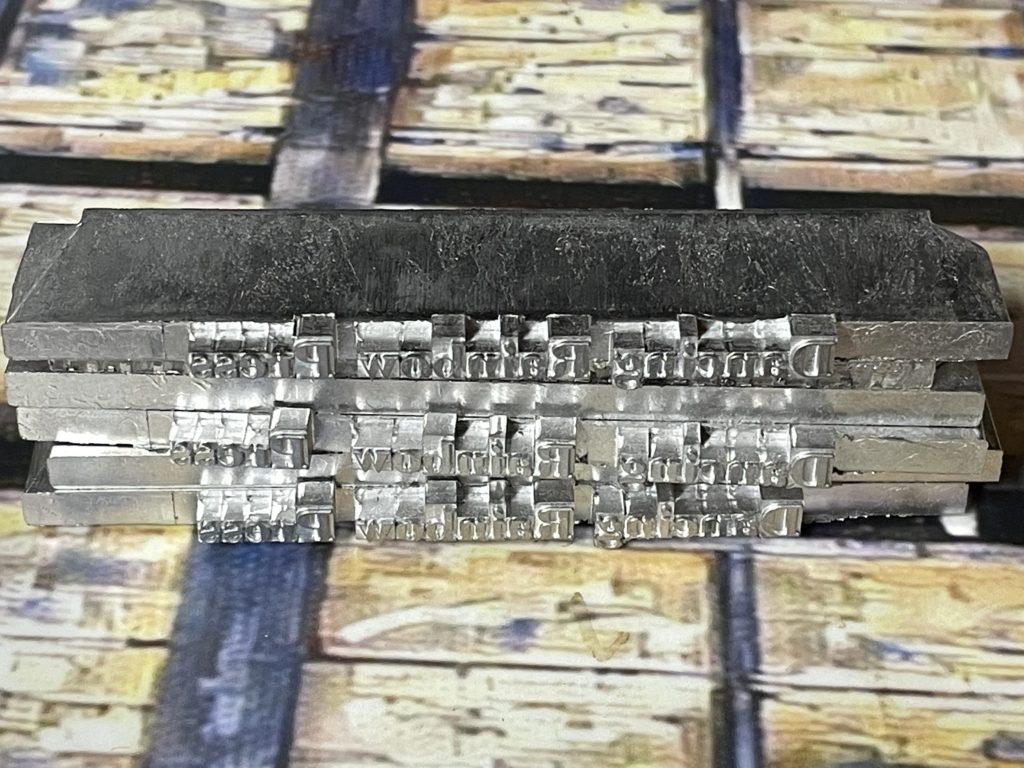

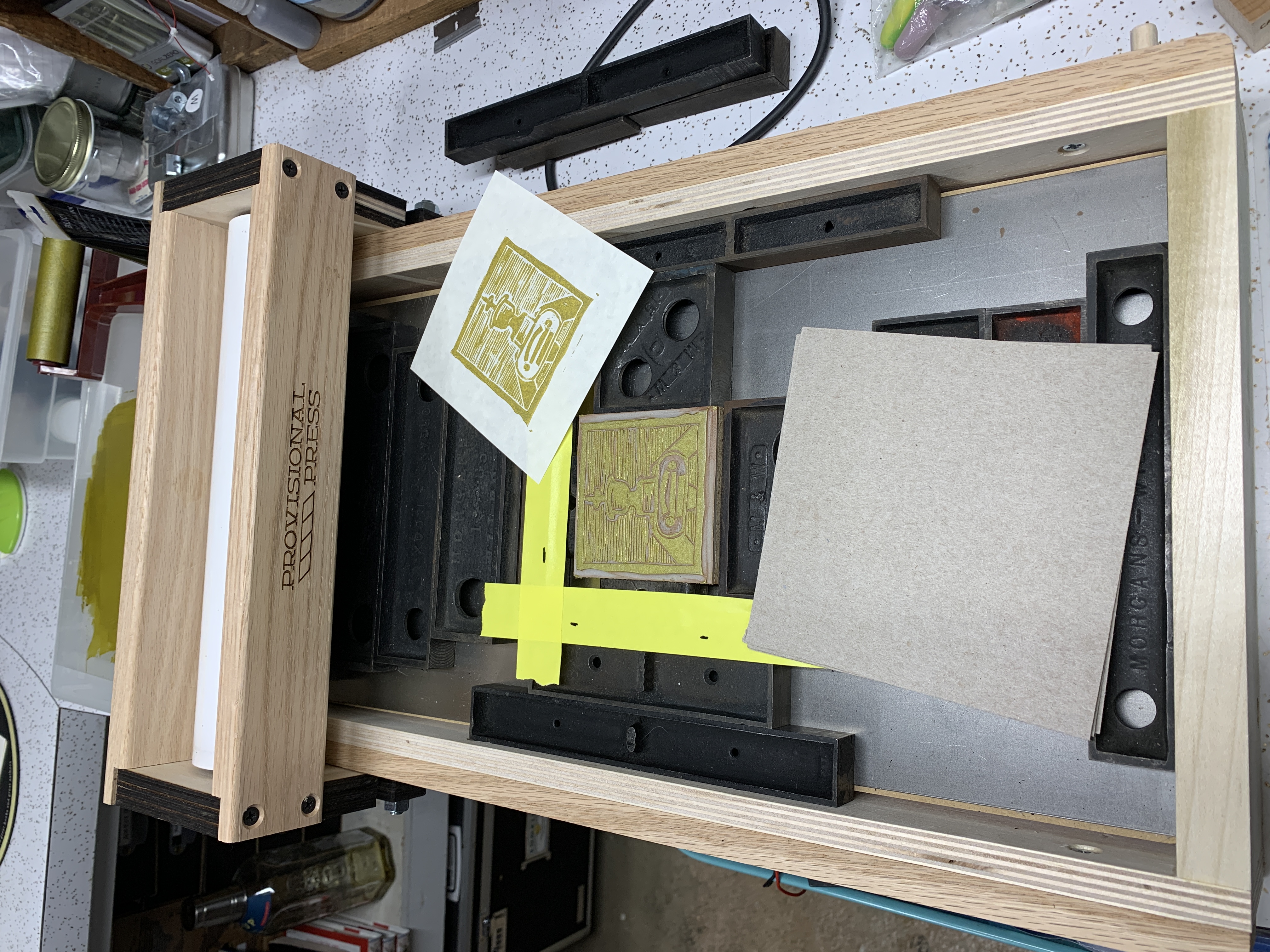
Saturday I made the first print on the Provisional Press that I bought in kit form and assembled last month. I made at least 14 good prints of a linocut of the finial on the Bronstrup iron press at the Conestoga Press using waterbase metallic gold block printing ink. Initially I planned to build one of these great presses from the free plans that can be downloaded. The plans are for cutting with a CNC machine, but I planned to use traditional woodworking methods. After hearing the creator talk about it at a virtual Chesapeake Chapter of the American Printing History Association meeting I decided to just order the kit. They are normally out of stock but you just have to get on the email list to be notified when they will have a limited number available each month. I had no problem ordering one a minute after the appointed time in March.
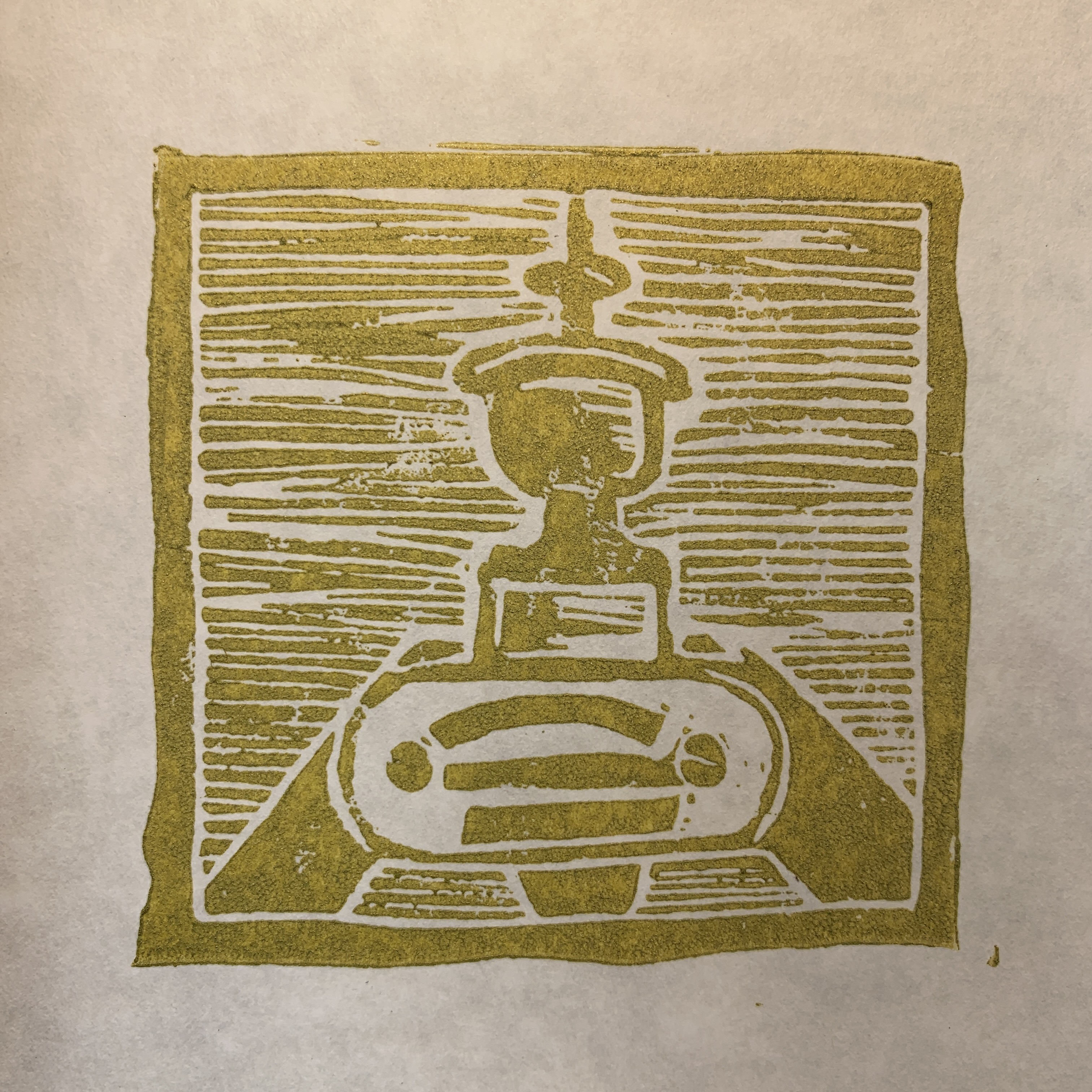
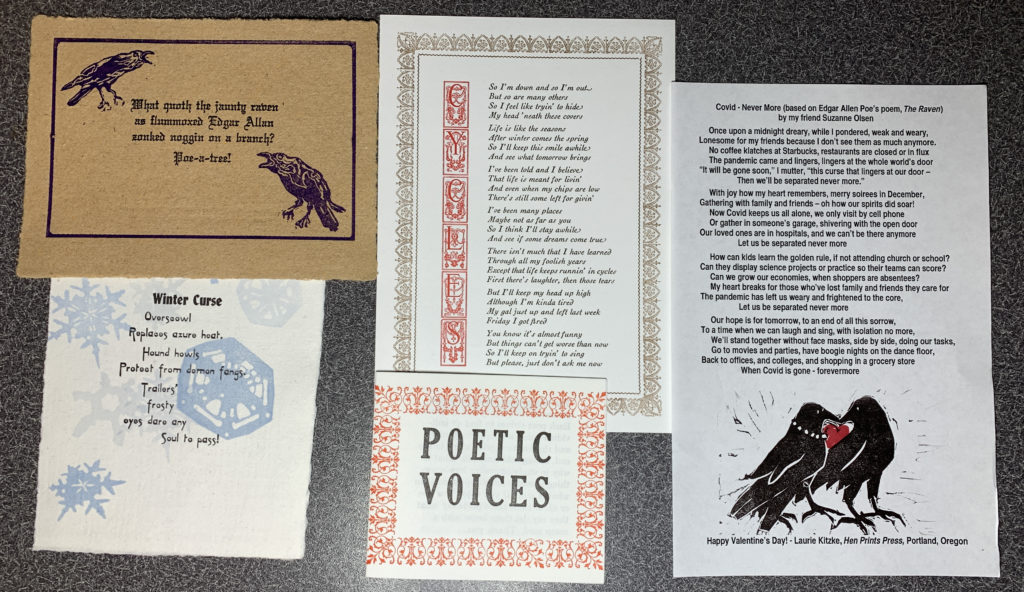
I was honored to be asked to provide the February Picks for the American Amateur Press Association which distributes members’ printing and writing efforts each month in a “Bundle”. You can see my article and other AAPA stuff here.
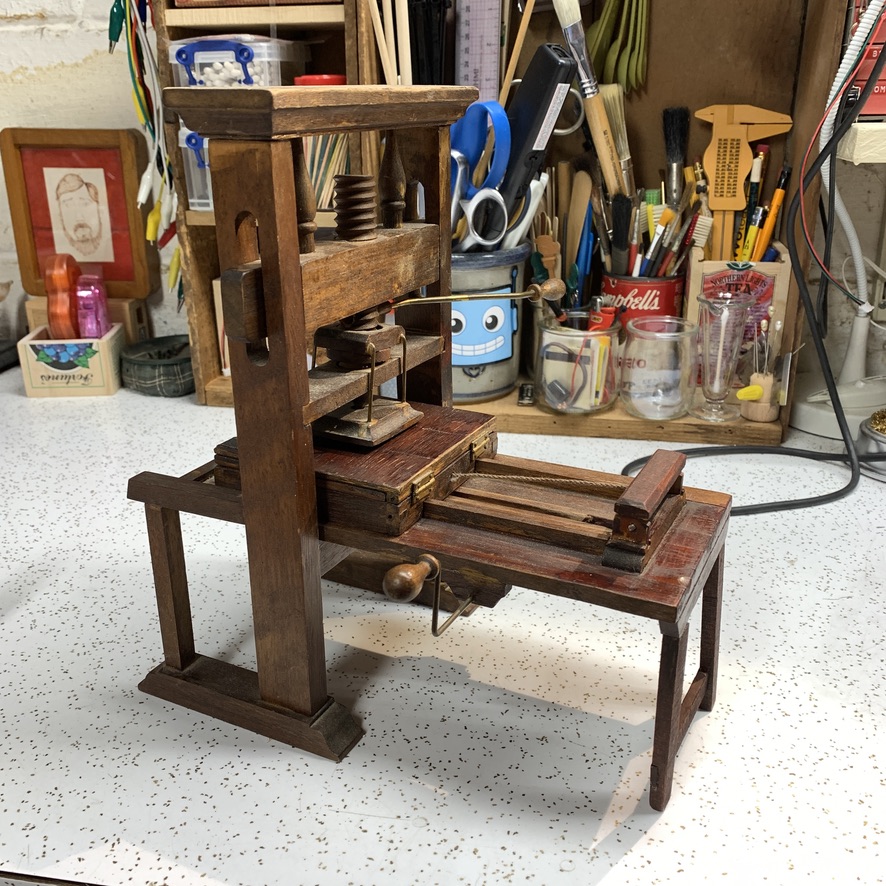
I finally finished repairing the Common Press model that I bought on eBay. When I purchased it there were some pieces missing and it was assembled incorrectly. Actually it was designed incorrectly with the frame being reversed. The leg to the far left was turned to the right and intruded into the space where a printer would stand. When I looked up pictures of the same model on the internet this was the way all were assembled, so I assumed it was perhaps the design of a press I was unfamiliar with. That part was broken loose from the rest of the press and I even glued it that way at first, but became less and less happy with it and decided to break it loose and reverse it to be assembled as shown. The finish on it is inconsistent, but rather than restore it fully by removing the finish and starting over I decided I liked the “used” look instead. I did much of the retouching and the staining of the new parts I added with a brown magic marker which I even described to the Scrollsaw Club members as cheating, but the result worked in the end, I think. I reversed the screw a bit so that it doesn’t actually press on the tympan, but there was some damage present because the small range of motion prevented it from being fully withdrawn. The last part was to tie the strings to facilitate cranking the bed back and forth.
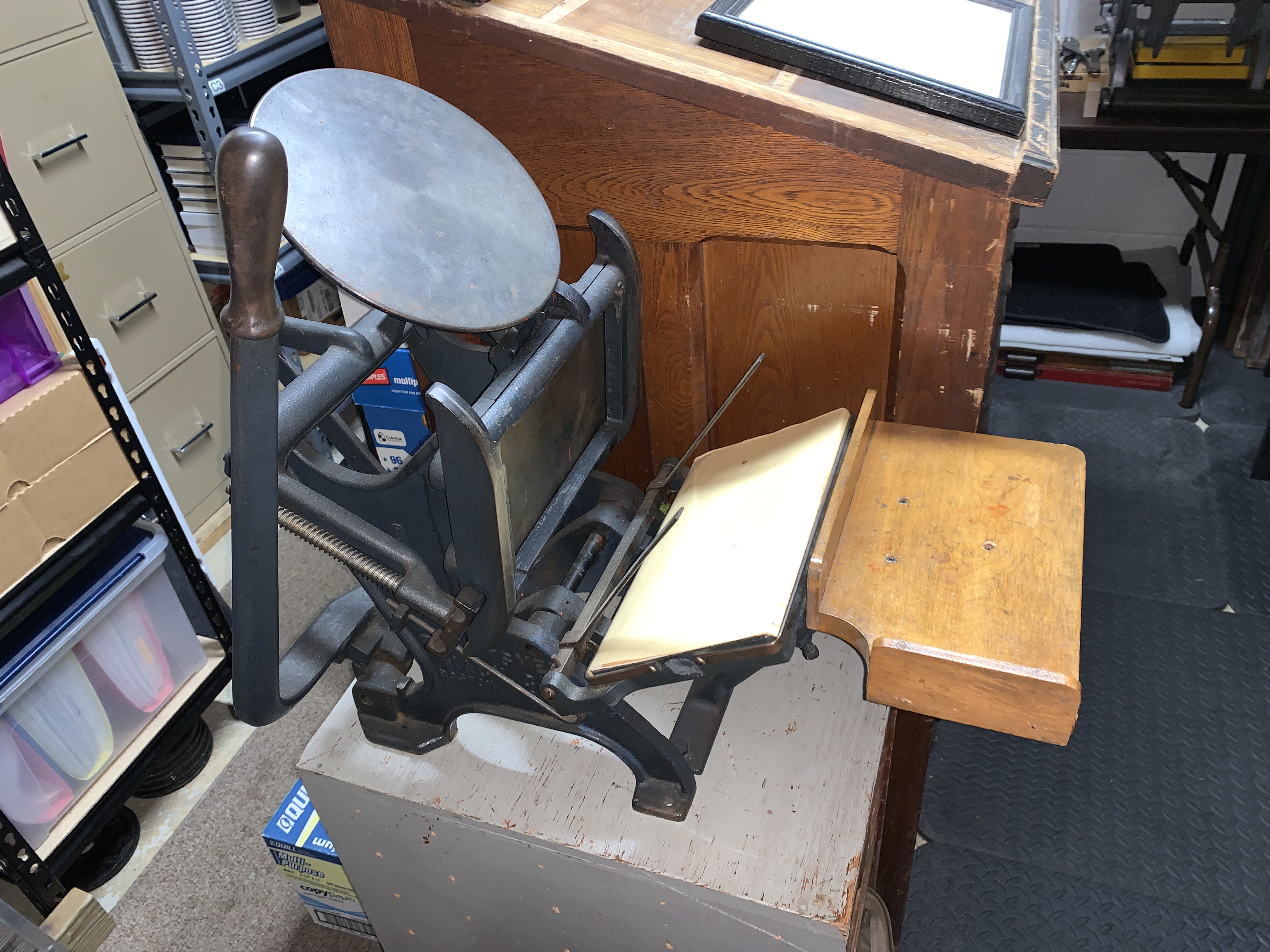
Bought with everything needed to get started. That’s what the previous owner had in mind, but life got in the way, so I wound up with this little press. It came complete with a home-made boxcar which would allow me to more easily print from photopolymer and although I’m a fan of metal type it’s nice to have the option. At this writing I haven’t tried that yet, but it’s nice to have the option.

Some time in the early to mid 1970’s I got a Kelsey 5×8 straight from the factory. The Dancing Rainbow Press was born, unfortunately getting its name from a terrible poem I had written that had its own cartoon character as well. It was located in a small unfinished room behind the bathroom at my apartment in Reamstown. It moved back home to my parent’s house in Mount Airy (2.0) when I did. There my wife to be and I printed our wedding invitations and moved it with us (3.0) to our first house on Walnut Street in Ephrata.
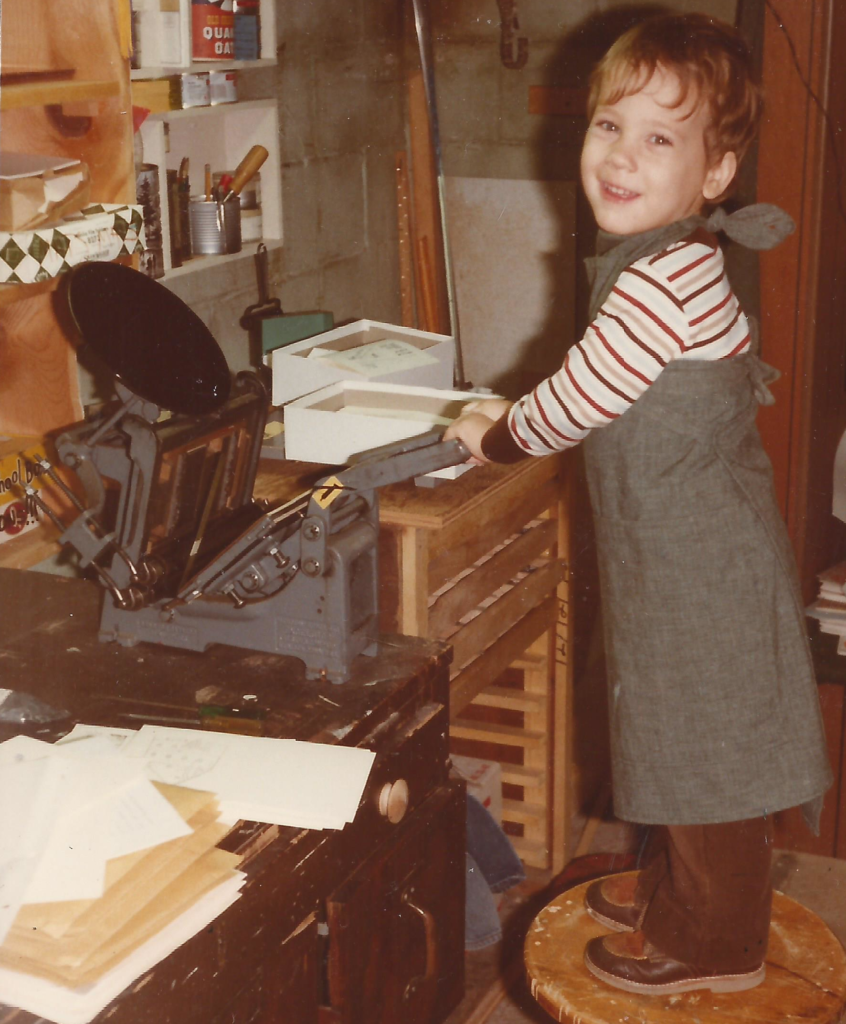
When we moved to Old Mill Road (4.0) it was set up in the basement. Our son, Ben is shown printing on it above. Use of it, however, languished and the press and most everything else was sold a decade or two later. Though I hadn’t printed for so long I soon missed having a press and as a replacement started volunteering at the print shop at the Historical Society and at the Ephrata Cloister. Some years passed and while volunteering at the Cloister I met a guy who said he had some printing equipment to sell. I had already bought a couple small presses for use at the historical society, but wound up sharing a large acquisition that outfitted a new shop at my training center in the old Recreation Center building on Cloister Avenue (5.0) in Ephrata.
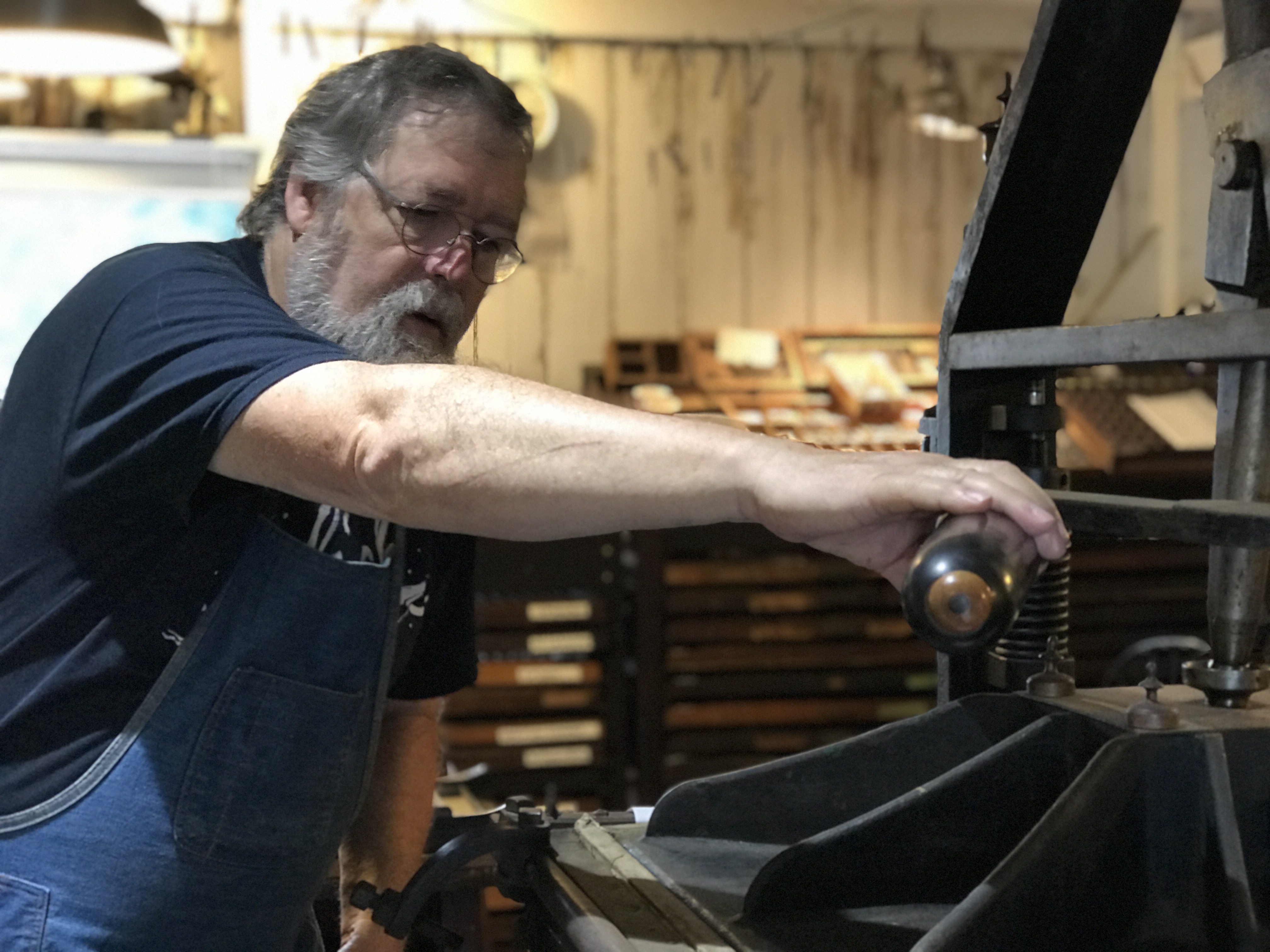
Due mostly to the COVID19 pandemic the center was closed and I moved the shop (6.0) into an undisclosed location in a small rental space in Ephrata. The Dancing Rainbow shines albeit underground again as pictured at the top of this article.
I bought this for a steal thinking it was a Golding, but paid a fair price or better for a Sigwalt. Since the manufacturer intended the parallel I can be forgiven. They were direct copies of the Golding Official #2. I was in search of an 1800’s tabletop press and may have gotten it just slightly. I got the look for sure with the decorative painting still intact on parts of the press. These were first made at the end of that century in 1899 and well into the 1900’s, but best I can find the round bases like mine came first and were replaced fairly quickly with square bases. Since they don’t have serial numbers there’s no way to better date mine. It prints pretty well and is great for demonstrating when drawing attention to our time period at the Conestoga Press.


My newest press in every sense. A Craftsmen Superior made of aluminum sometime in the 1970’s according to the company in Framingham, MA where you can still get parts today. The feed tables are slightly bigger than original and made by me out of red oak.
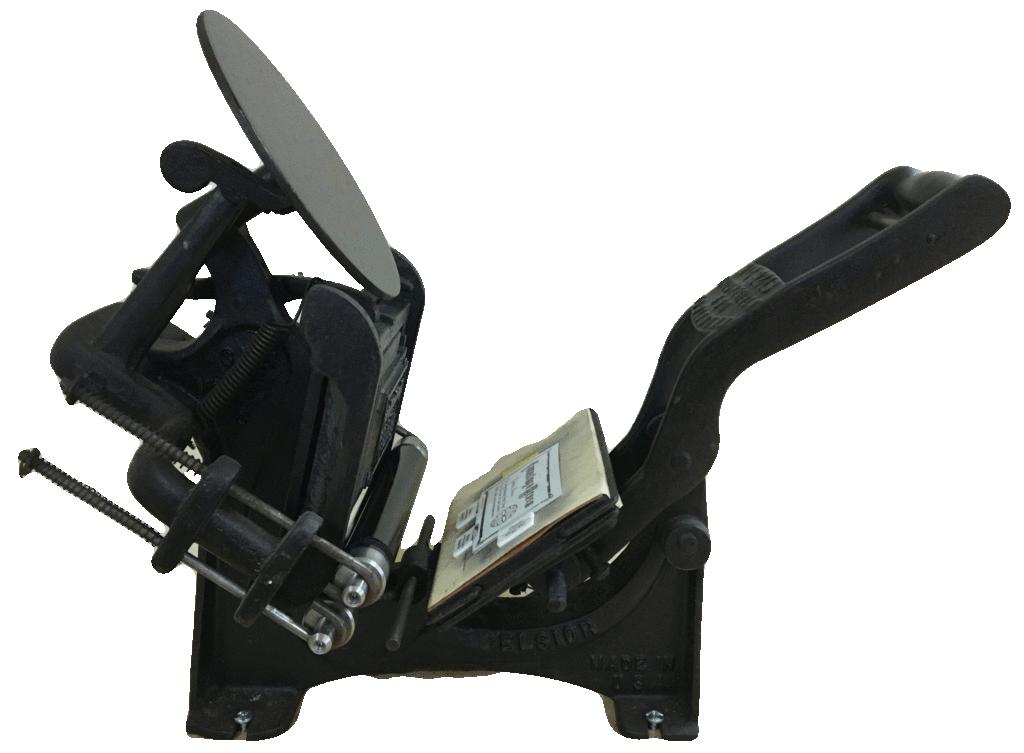
When I began printing in the early 1970’s I bought a 5×8 Excelsior, new from the Kelsey Company in Meriden, Connecticut. After a decade or more of no use I sold the press and most of the supplies. Now as my collection has been rebooted it was only natural to add one though the price has climbed significantly since I sold my larger one and I settled for an older, smaller, repaired one. I bought it from a sale at the Museum of Printing in Haverhill, Massachusetts. The idea was to use it to demonstrate on the road at events for Conestoga Press.